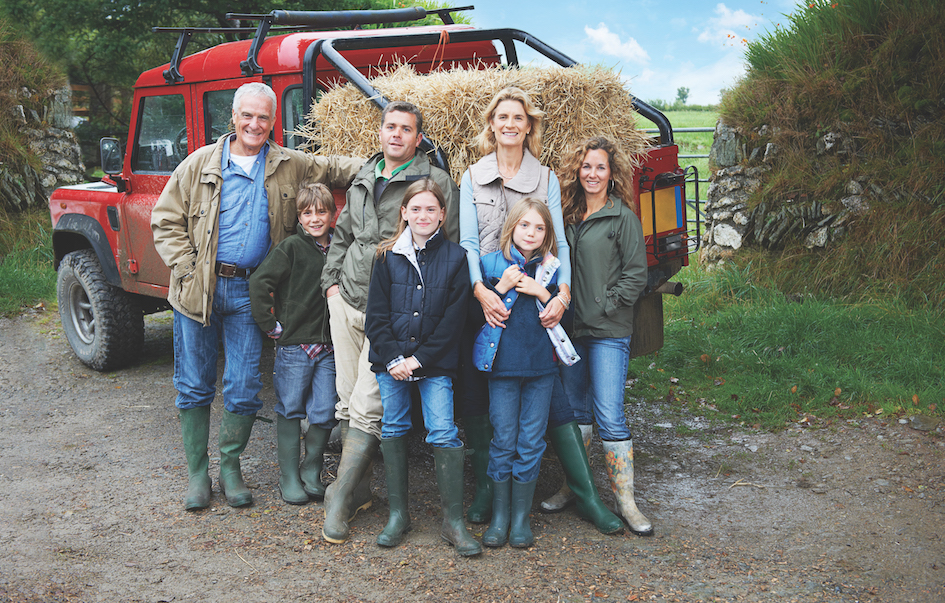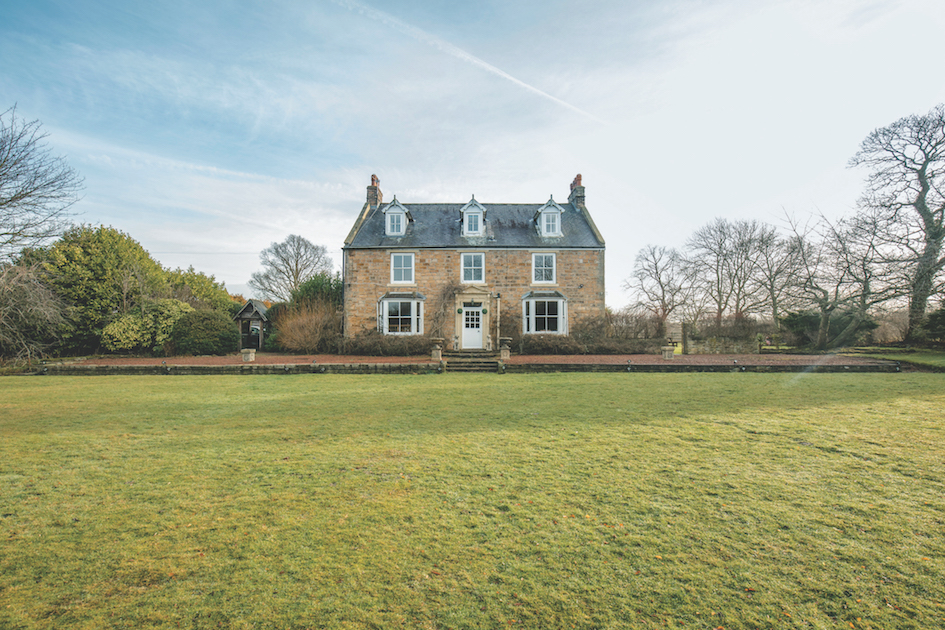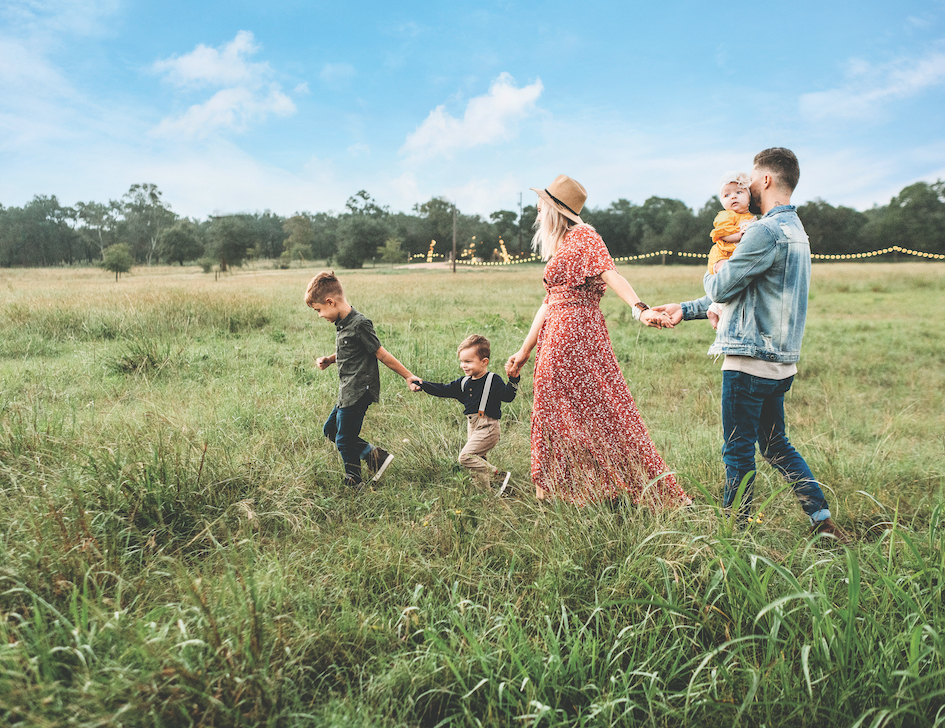The Country Calls
By
4 years ago


Londoners are seeking rural homes with metropolitan mod cons, says Anna Tyzack
Splendid isolation was never a priority for the interior designer Laura Hammett. She grew up in London and lived, until recently, in a beautiful, open-plan home in Wimbledon. But last autumn she packed up her city life and made the big move out of town to a Georgian farmhouse in Hampshire. It was daunting, she admits, but the events of 2020 had led her and her husband, Aaron, to prioritise space, peace and privacy. ‘With so much more happening under one roof, we opted to take the plunge and transform the way we live and work,’ she says.
The Hammetts, according to Mark Wheeler, head of sales
at Hamptons, are typical of a new breed of Londoner settling in the countryside. For families like them, rural isolation isn’t the driver; neither is a freezing cold rectory in need of an overhaul. They’re looking for a similar lifestyle to the one they enjoyed in town – only with more space. ‘We specifically looked for a house in a village with neighbours on either side – a connection to a community was crucial,’ confirms Hammett, who is running her business, Laura Hammett Interiors, from her new home.
According to James Mackenzie, head of Strutt & Parker’s country department, shops, pubs and cricket greens are all on the wish list of today’s London-leaver, along with a country club. ‘They are used to having everything on their doorstep back in the city and want to maintain their healthy lifestyle,’ he says. Since the pandemic, around 45 per cent of Strutt & Parker’s weekly applicants for country houses between two and £30m have hailed from a London address.
The perfect modern country house for ex-Londoners has all the toys: swimming pool, cinema, super-fast broadband, tennis court, gym and extra room for extended family and working from home, according to property finder, Mark Parkinson of Middleton Advisors. In the past, city-leavers judged rural villages on the speed of their commuter link to London, but in 2021, where home working is a reality for at least a couple of days, it’s superfast broadband that cliches the deal, agrees Andrew Perratt, head of Savills country residential business. If there’s decent broadband, buyers will cast their nets deeper into Oxfordshire, Wiltshire and Sussex, while those looking for a complete overhaul to their lifestyle are making for Yorkshire, Cheshire, Norfolk and rural Scotland. ‘Ninety is the new 60; and by that I mean commuters are prepared to spend 90 minutes commuting into the city if they are travelling on fewer days within the week.’
Schooling has always been a major focus for London- leavers, but the new wave of buyers are intent on walking their children to school. ‘Being close to school is a real luxury,’ says Jason Roberts, head of Strutt & Parker’s Morpeth office. ‘In London they’d have had all their school friends nearby and they want the same in the country – as their children get older they don’t want to become a taxi service driving all over the county.’

Ideally the house will be period – according to Perratt, Londoners still prioritise an older property over something modern. It will be in excellent repair though – as the modern London-leaver knows how expensive new sash windows, basements and loft conversions can be – and it will be as spacious as they can afford. ‘It needs to have plenty of character and be in good condition,’ confirms Joanna Cocking, head of prime country sales at Hamptons. Annexes and disused barns are priorities for some buyers, who use them as home offices, gyms and secondary accommodation, adds Matthew Sudlow, head of estates and farms at Strutt & Parker, although they’re wary of taking on too much land and farm buildings, seeing them as a money pit they could do without.
The way city-leavers are utilising the extra living space is also changing, according to Hammett. No more bashing down walls to create vast open plan spaces; the post lockdown city-leaver relishes multiple rooms to give each family member their own space. ‘Naturally you have more space
to play with in the country, and every room can have a different purpose and feel,’ she says. ‘Formal spaces are less relevant – separate dining rooms should feel intimate enough to use on a daily basis as a study or additional living area.’

Outside space is also crucial: gardens are now the number one request for all buyers, according to Rupert Sweeting of Knight Frank. Buyers also want to be able to walk into the countryside from their front door rather than get into the car every time they exercise. ‘More people are requesting homes near footpaths and tow paths,’ confirms Mackenzie.
The end goal, according to Edward Rook, head of Knight Frank’s country department, is to create a mini sanctuary in which to go about your ordinary life – and to this end, a few of the more traditional country house requirements still stand. ‘An attractive view is even more imperative now people are spending much of their life at home,’ he says. ‘It’s got to be a comfortable, inviting setting.’ And if you’re planning on keeping dogs, horses or children, you’ll want to have the traditional line up of anterooms behind the green baise door. ‘I cannot underestimate the need for a boot room and dirty sink to contain all the mud,’ says Hammett.



